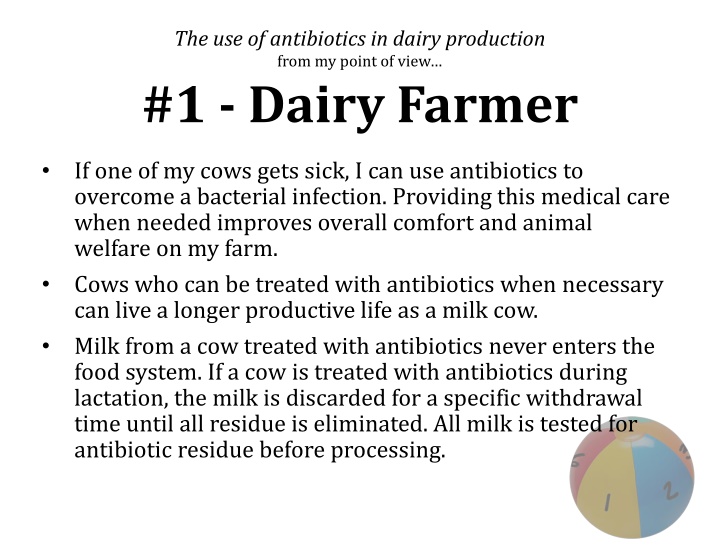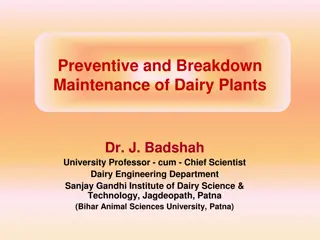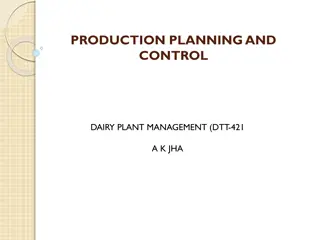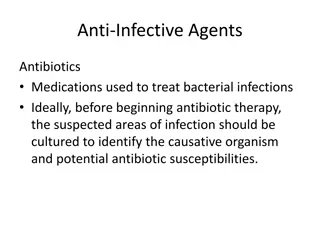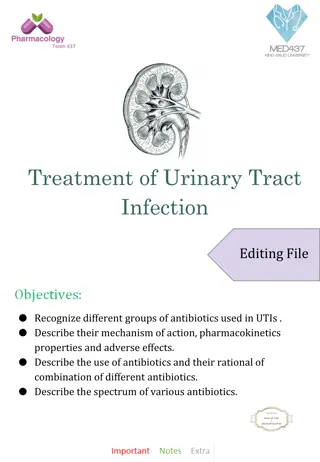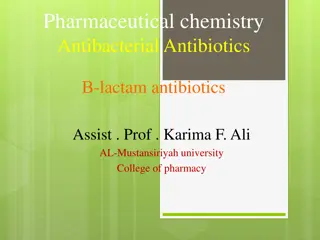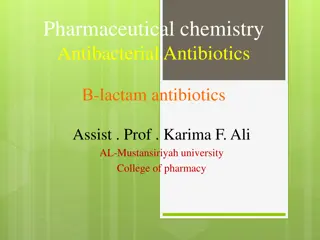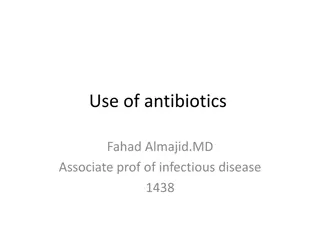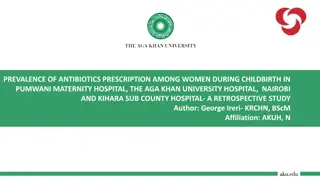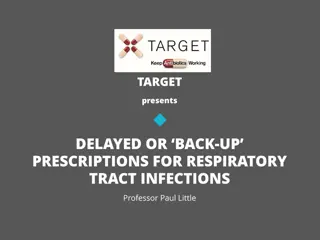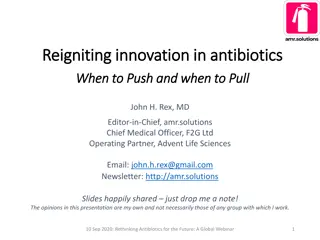Perspectives on Antibiotics Use in Dairy Production
Dairy farmers use antibiotics to treat sick cows for improved animal welfare; organic dairy farmers face restrictions but benefit from higher premiums; concerns about antibiotic resistance in children debunked by medical professionals; milk processors prioritize food safety through rigorous testing for antibiotic residues to meet consumer demand.
Download Presentation

Please find below an Image/Link to download the presentation.
The content on the website is provided AS IS for your information and personal use only. It may not be sold, licensed, or shared on other websites without obtaining consent from the author.If you encounter any issues during the download, it is possible that the publisher has removed the file from their server.
You are allowed to download the files provided on this website for personal or commercial use, subject to the condition that they are used lawfully. All files are the property of their respective owners.
The content on the website is provided AS IS for your information and personal use only. It may not be sold, licensed, or shared on other websites without obtaining consent from the author.
E N D
Presentation Transcript
The use of antibiotics in dairy production from my point of view #1 - Dairy Farmer If one of my cows gets sick, I can use antibiotics to overcome a bacterial infection. Providing this medical care when needed improves overall comfort and animal welfare on my farm. Cows who can be treated with antibiotics when necessary can live a longer productive life as a milk cow. Milk from a cow treated with antibiotics never enters the food system. If a cow is treated with antibiotics during lactation, the milk is discarded for a specific withdrawal time until all residue is eliminated. All milk is tested for antibiotic residue before processing.
The use of antibiotics in dairy production from my point of view #2 Organic Dairy Farmer To qualify my farm as USDA Organic I cannot use antibiotics to treat bacterial infections in my cattle. By choosing this production style, I receive a higher premium for my milk. Following organic requirements increases my production costs. For example if one of my cows gets mastitis or another bacterial infection requiring antibiotic treatment, she can never return to the organic milk herd. However, the higher premium makes it worth it. Some consumers prefer milk from cows that cannot be treated with antibiotics. I can select my management practices based on this consumer demand.
The use of antibiotics in dairy production from my point of view #3 Mother of Young Children My children drink a lot of milk. I heard that they could develop a resistance to human antibiotics from drinking milk from cows who were treated with antibiotics. I don t want dairy farmers to use antibiotics.
The use of antibiotics in dairy production from my point of view #4 Medical Doctor Any resistance people develop to antibiotics is a result of taking too many antibiotics themselves, not a result of consuming meat or dairy products from animals who may have been treated with antibiotics at some point in their life. Federal guidelines monitor milk for antibiotic residue to ensure it is never in the milk we drink. From a health standpoint, the risks of not consuming adequate nutrients that are abundant in dairy products (protein, calcium, vitamins, and minerals) far outweighs the risk of developing a resistance to antibiotics.
The use of antibiotics in dairy production from my point of view #5 Milk Processor We are careful to only sell food that has been approved as wholesome and safe. As food safety experts, federal and state agencies establish guidelines for farms and processing companies. Every truck of milk we receive is tested for antibiotic residue. It is discarded if a residue is found. In addition to following state and federal regulations, we also aim to produce a food product that meets the demand of consumers.
The use of antibiotics in dairy production from my point of view #6 Veterinarian Antibiotic residues are not found in commercially processed milk and research has shown that consuming meat and milk does not increase likelihood of antibiotic resistance in humans. However, research does show that efforts in human medicine and veterinary medicine should improve to decrease the overall use of antibiotics. Looking at the whole picture, improving animal health and hygiene to prevent the need for antibiotics is recommended. Improving biosecurity, following recommended vaccination programs, and using alternatives to antibiotics when possible are all measures farmers can take to decrease chances of developing antibiotic resistance.
